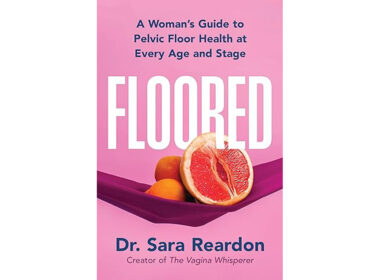Did you hear the recent news about the link between hormonal birth control and depression? There isn’t one. At least this is the finding from a study coming from Ohio State University Wexner Medical Center led by Brett Worly, MD, OB/GYN.
Worly’s team analyzed 30 years of research with an eye for quality and bias and concluded that there is a minimal connection between hormonal birth control and depression. “When looking at large populations, progestin-only contraception does not seem to be the culprit,” Worly told MD Magazine.
This comes after two large-scale, peer-reviewed studies from the University of Copenhagen in 2016 and 2017 found an increased risk for both depression and suicide among women on various forms of hormonal birth control.
Which researchers are right? The truth is, many women cite depressed symptoms as reasons they get off the Pill, and even the most prescribed hormonal birth control brands today, such as the Nexplanon implant, cite depressed mood among their most common risks and side-effects. So while debate continues as to the extent of hormonal birth control’s side effects, as with any medication, the risk of taking it is not neutral. What’s more, there are medication-free ways that can help women avoid pregnancy at similar or better typical effectiveness rates as the Pill, with zero risk of side effects. These are fertility awareness methods (FAM).
Not only will FAMs not hurt mental health, they can equip women to improve their mental health in many ways. I found this to be true on my own journey while using FAMs. I’ve learned that knowing how and when hormones fluctuate over the course of a cycle is a key part of learning any FAM, and that this knowledge can be invaluable in a woman’s journey to a better understanding of her mental health.
This is not to say that FAMs can do the work of mental-health professionals; in the face of severe mental illness, one should seek professional help. But as a part of an integrated health program, charting one’s fertility can offer more angles from which to analyze what exactly is going on, and what our hormonal cycles have to do with it all.
#1 FAMs can alert us that something is wrong hormonally
As a woman who has used FAMs for more than four years, I have personally experienced significant mental health benefits from understanding my cycle. Early in my marriage, my periods were increasingly difficult to manage both emotionally and physically. For a time, I did not look any further into the issue, mistakenly assuming that painful PMS was my lot as a woman.
As it turned out, my painful periods, intensely bad moods, and hair-trigger crying reflexes should have alerted me and my husband (yes, he knows this stuff) to the fact that something was off with me hormonally. It was only when we began trying to conceive—and after several months of trying, despite having intercourse around my most fertile times—that we truly began to realize that something was not right. So we brushed up on our knowledge of female cycles and read books like Fertility, Cycles, and Nutrition. This helped us see that the problem was one relating to my hormones—a problem that we could tackle with the right doctors.
While emotional changes due to cycles do not qualify as mental illness, I learned firsthand how they can affect my mental well-being if they are out of whack. If those symptoms are even more intense than the ones I’ve described, you may have Premenstrual Dysphoric Disorder (PMDD) and should seek treatment from a health professional and consider a Natural Procreative Technology (NaPro) trained physician.
#2 FAMs can help navigate the emotional minefield of infertility
Treating the root cause of my infertility—which my doctors determined was a hormonal imbalance—very quickly made my periods easier to manage both emotionally and physically. Thanks to FAMs and NaProTechnology, my husband and I were eventually able to overcome our infertility, but it was a long emotional road. Each month that we tried unsuccessfully to get pregnant, I welcomed my period with a flood of tears and feelings of hopelessness.
For the first few months of this emotional upheaval, my brightside-finding husband would spend those first few days of my period trying to cheer me up, and he would sometimes get frustrated when he found me nearly inconsolable. I found, however, that after my period would end, I felt much more positive and hopeful for the next cycle. Like a fog lifting, the downward spiral of sadness that I felt during the first few days of my period became more in-check, even though I still felt sad that we hadn’t conceived.
After a few months of this pattern, both my husband and I began to get a better grasp on the significant role that my hormones played in my mood, my attitude, and my outlook each cycle. We finally came to the understanding that I just needed those first few days of my period to grieve, and that once the hormonal freefall was over, I could see things a lot more clearly. While this knowledge did not make our infertility easier to deal with, it immensely helped my own mental health—and the health of my marriage—to know that the uncontrollable tears had an expiration date each cycle, and that my husband understood my need for extra space and kindness during that time.
#3 FAMs can help women navigate postpartum hormonal changes
My newfound understanding of my cycle has been extremely helpful during the postpartum time, too. In the early days after my son was born, I naturally experienced many of the emotional highs and lows that all new mothers face. But, now knowing the role of hormones in my fertility cycle, I felt in tune with my emotional health and felt an awareness that what I was experiencing wasn’t abnormal for me.
In this way, fertility awareness helps women who may suffer from postpartum depression; knowing the normal range of emotions during one’s cycle can empower women to realize more quickly when something is off emotionally.
Now, one year since giving birth, as I pay attention to my returning fertility signs and understand better what is going on in my body hormonally, I have a better idea of what’s within my range of normal feelings, and I can alert myself to get help if anything unusual arises. The dark mystery is gone.
#4 FAMs can improve relationships
With each month that my husband and I have used a FAM, and as we’ve navigated the ups and downs of early marriage, trying to conceive, and having our first child, we have developed a better understanding of the interplay of hormones occurring during each of my cycles. Together, we have learned more about my body and my mind than we would have ever thought possible, which has lent a deep level of intimacy to our relationship that is beyond words.
Not only have FAMs helped strengthen my relationship with my husband, I believe it has strengthened our relationship with our son. And studies show that these strong familial relationships may be some of the best protectors against mental illness for both spouses and their children.
The mental health benefits that I have experienced from using a FAM are only some of the gifts my family has experienced from FAMs, but they will impact our family on a deep level for years to come.
If you are a woman suffering in the mental health arena, know you are not alone—and that you do not need to continue suffering. As you navigate your own mental health journey, it’s worth learning how to chart your cycle with a FAM as a means to get to know your body’s unique cycle. It may not be a silver bullet for all of your health issues—mental or otherwise—but just like anything that monitors your body’s symptoms, it can’t hurt, and will only add more helpful information to your self-care arsenal. As a FAM-practicing woman who has experienced these benefits firsthand, I’ve come to see how fertility awareness can benefit the whole health of anyone—mind and body.
When this article refers to fertility awareness methods (FAM), or natural family planning (NFP), we are referring to Fertility Awareness-Based Methods, evidence-based methods of cycle charting which can be used as effective forms of natural birth control when learned by a certified instructor.
Last updated October 27, 2020.







